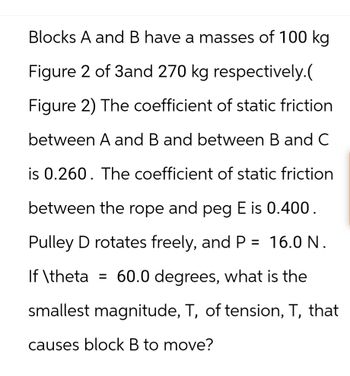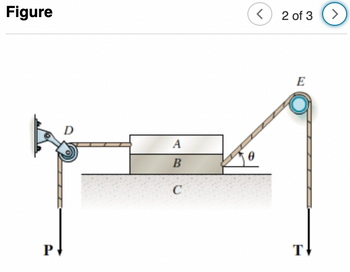Related questions
Question

Transcribed Image Text:Blocks A and B have a masses of 100 kg
Figure 2 of 3and 270 kg respectively.(
Figure 2) The coefficient of static friction.
between A and B and between B and C
is 0.260. The coefficient of static friction
between the rope and peg E is 0.400.
Pulley D rotates freely, and P = 16.0 N.
If \theta = 60.0 degrees, what is the
smallest magnitude, T, of tension, T, that
causes block B to move?

Transcribed Image Text:Figure
< 2 of 3
>
P
A
B
C
E
T
Expert Solution
This question has been solved!
Explore an expertly crafted, step-by-step solution for a thorough understanding of key concepts.
Step by stepSolved in 2 steps with 2 images
